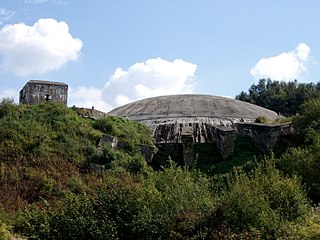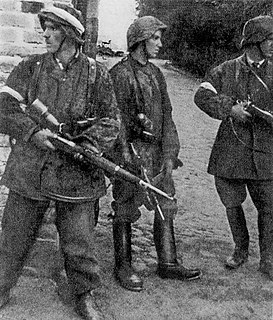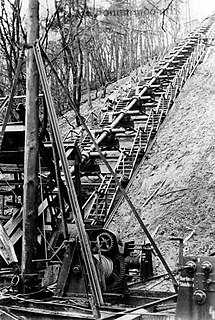 W
WV-weapons, known in original German as Vergeltungswaffen, were a particular set of long-range artillery weapons designed for strategic bombing during World War II, particularly Strategic bombing and/or aerial bombing of cities. They comprised the V-1, a pulsejet-powered cruise missile; the V-2, a liquid-fueled ballistic missile ; and the V-3 cannon. All of these weapons were intended for use in a military campaign against Britain, though only the V-1 and V-2 were so used in a campaign conducted 1944–45. After the invasion of Europe by the Allies, these weapons were also employed against targets on the mainland of Europe, mainly France and Belgium. Strategic bombing with V-weapons killed approximately 18,000 people, mostly civilians. The cities of London, Antwerp and Liège were the main targets.
 W
WThe list of V-2 test launches identifies World War II launches of the A4 rocket. Test launches were made at Peenemünde Test Stand VII, Blizna and Tuchola Forest using experimental and production rockets fabricated at Peenemünde and at the Mittelwerk. Post-war launches were conducted at Cuxhaven, White Sands Proving Grounds, Cape Canaveral, Kapustin Yar, and on the USS Midway during Operation Sandy.
 W
WThe V-2, with the technical name Aggregat 4 (A4), was the world's first long-range guided ballistic missile. The missile, powered by a liquid-propellant rocket engine, was developed during the Second World War in Germany as a "vengeance weapon" and assigned to attack Allied cities as retaliation for the Allied bombings against German cities. The V-2 rocket also became the first artificial object to travel into space by crossing the Kármán line with the vertical launch of MW 18014 on 20 June 1944.
 W
WThe Aggregat series was a set of ballistic missile designs developed in 1933–45 by a research program of Nazi Germany's Armed Forces (Wehrmacht). Its greatest success was the A4, more commonly known as the V-2.
 W
WThe bombing of the Bezuidenhout took place on 3 March 1945, when the Royal Air Force mistakenly bombed the Bezuidenhout neighbourhood in the Dutch city of The Hague. At the time, the neighbourhood was more densely populated than usual with evacuees from The Hague and Wassenaar; tens of thousands were left homeless and had to be quartered in the Eastern and Central Netherlands.
 W
WCrossbow was the code name in World War II for Anglo-American operations against the German long range reprisal weapons (V-weapons) programme. The main V-weapons were the V-1 flying bomb and V-2 rocket – these were launched against Britain from 1944 to 1945 and used against European targets as well.
 W
WDuring World War II, the Polish resistance Home Army, which conducted military operations against occupying German forces, was also heavily involved in intelligence work. This included operations investigating the German Wunderwaffe: the V-1 flying bomb and the V-2 rocket. British intelligence received their first Polish report regarding the development of these weapons at Peenemünde in 1943.
 W
WThe Mare's Nest is a 1964 book by English author and Holocaust denier David Irving, focusing on the German V-weapons campaign of 1944–45 and the Allied military and intelligence effort to counter it. The book covers both sides of the story – the Allied arguments over how to interpret intelligence concerning the status and existence of the V-weapons and the German debate over how to deploy the new weapons to make the most of their supposed capacity to reverse the tide of the war. During his research for the book, Irving discovered that the Allies had broken the German Enigma code, over a decade before that became public knowledge, but agreed to keep it secret. The Mare's Nest was well received by reviewers and those involved in Operation Crossbow and has been widely cited by authors writing about the V-weapons programme, even after the eclipse of Irving's reputation as a result of his Holocaust denial.
 W
WStaveley Road is a road in Chiswick in the London Borough of Hounslow which was the site of the first successful V-2 missile attack against Britain.
 W
WThe V-1 flying bomb —also known to the Allies as the buzz bomb, or doodlebug, and in Germany as Kirschkern or Maikäfer (maybug), as well as by its official RLM aircraft designation of Fi 103—was an early cruise missile and the only production aircraft to use a pulsejet for power.
 W
WThe V-3 was a German World War II large-caliber gun working on the multi-charge principle whereby secondary propellant charges are fired to add velocity to a projectile.